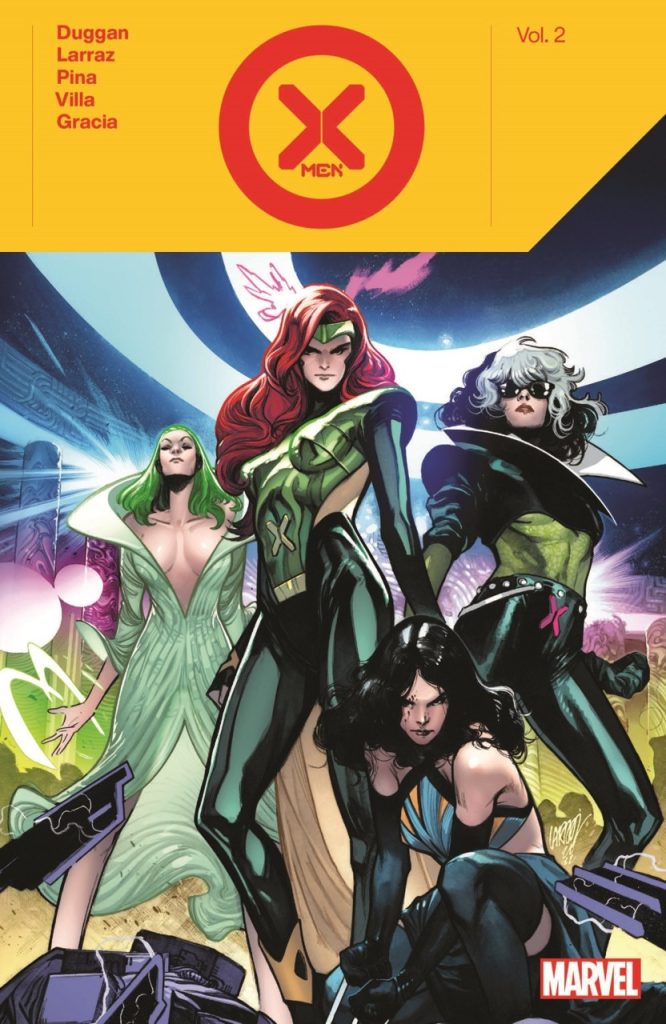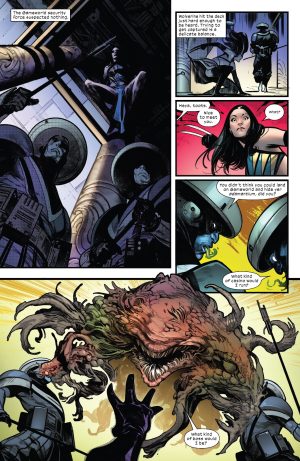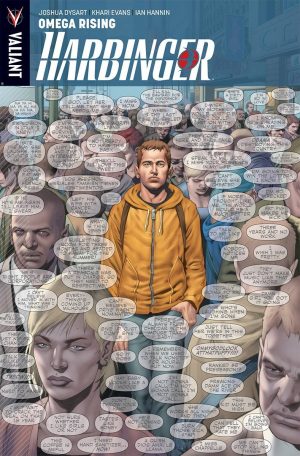Review by Karl Verhoven
A frustration about the massive world the X-Men, or more properly mutants, now occupy is the knock-on impacts of events in other titles. It seemed another such occurrence blighted Vol. 1, with Cyclops suddenly facing an existential problem. However, Gerry Duggan plays fair and rolls out the circumstances in the opening chapter. The X-Men intend to keep secret their ability to resurrect their dead, and a very public death for Cyclops means he can’t be seen as was in the wider world. He’s now Captain Krakoa, a faintly ridiculous character, so thankfully we don’t see him too often.
Pepe Larraz drew the entirety of the previous volume, but is restricted to the first and final two chapters here. It’s usually a drawback to have three artists on six chapters, but the contributions of Javier Piña and C.F. Villa are both broadly in the same style, and the fragmented nature of Duggan’s storytelling means so many balls are in the air there’s little connection between one chapter and the next. Larraz is a frustrating artist, technically gifted in many ways, yet his pages have a cluttered look.
In one way or another Orchis is responsible for almost all the problems the X-Men face in this selection. It’s an organisation of humans fearing mutant supremacy and devising attacks across a number of platforms. Establishing a human beachhead on a moon orbiting the mutant terraformed Mars, now renamed Arakko, is a provocation. They continue to recruit villains, and are aware mutants can be resurrected and intend to make that knowledge public, although we learn here why their first attempt failed. The sole unconnected issue is from Gameworld, a planet of gamblers betting on wiping on humanity, mutants and all.
Both situations come to a head before this collection ends. Much of what Orchis is has been generated by a scientist named Dr. Stasis. “I’m a doctor”, he proclaims on being revealed, “and the only planet I have has been made very ill by you mutants”. His identity is a clever revelation, and one most won’t see coming, yet at the same time it’s a logical progression of what a known quantity stands for. Equally clever is the near impossible task Duggan sets on Gameworld and how that plays out.
British satirical magazine Private Eye has long applied the term “reverse ferret” to a newspaper completely contradicting their previous position. An example would be as follows – “as good as it was, the first volume of Duggan’s X-Men seemed to set too much in motion, and it seemed the bad old days of dragging X-Men plots on forever were back”. That’s not been the case and Duggan ties off all plotlines here compactly and efficiently in time for the election of a new X-Men team to pick up in Vol. 3.





